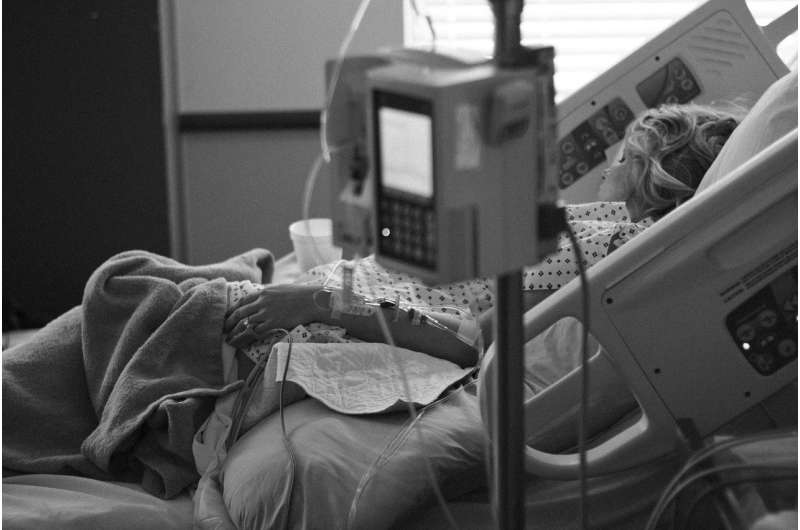More than 1,600 extra trauma victims alive today says major new study

The NHS in England has saved an additional 1,600 patients with severe injuries since major trauma centres were established in 2012.
New findings show the creation of major traumas centres has led to the survival of more than 1,600 patients who have suffered some of the most severe and complicated injuries thanks to top teams of surgeons, doctors and clinical staff. Patients also spent fewer days in hospital and had improved quality of life after receiving critical care.
The independent report, which features in the latest issue of EClinicalMedicine published by The Lancet, has been compiled by the Trauma Audit and Research Network (TARN) based at The University of Manchester supported by experts at the Universities of Leicester and Sheffield.
Major trauma centres have played a vital role in saving the lives of many victims of knife, gun and acid attack crimes that have seen a sharp increase in London and other inner city areas in recent months.
Research into the outcomes of more than 110,000 patients admitted to 35 hospitals between 2008 and 2017 represents an increase of nearly a fifth in the odds of survival from severe injury in the five years from 2012.
The findings endorse the shake-up of NHS trauma care in 2012 with seriously injured patients sent direct to newly designated major trauma centres, bypassing smaller, local hospitals that offered less specialist care.
Professor Keith Willett, NHS England's Medical Director for Acute Care, who led the changes in 2012 and now leads the wider NHS urgent and emergency care review, said: "We have made major advances in urgent care over the last five years as this study demonstrates. As the NHS develops its ten year plan, the success of major trauma centres will help inform how we deliver better care for patients through the use of specialist clinical networks."
Professor Chris Moran, NHE England's National Clinical Director for Trauma Care, said: "This study shows that changes to trauma care, designed by clinicians, are saving hundreds of lives every year. Patients suffering severe injury need to get to the right specialist centre staffed by experts, not simply the nearest hospital. Thanks to the skills of NHS staff, we are confident that we will continue to see further increases in survival rates for this group of patients.
"Major Trauma Centres deal with the victims of stabbings and acid attacks as well as car and motorbike accidents. We have all seen the terrible increase in knife crime in our cities, especially in London, and there is no doubt that the new trauma system has saved many lives as these patients receive blood transfusion and specialist surgery much quicker than before. The whole system, from prehospital care through to recovery and rehabilitation, has improved."
Professor Timothy Coats, Professor of Emergency Medicine at the University of Leicester, said: "We used patient outcomes data in the first four years prior to 2012 as the baseline, then looked at the five years since 2012. The baseline was flat, whereas the five years since the reorganisation of trauma care showed improved outcomes.
"These findings demonstrate and support the importance of major trauma networks to urgent care with figures showing there were 90 more survivors in 2013 rising to an additional 595 in 2017. Over the course of the five years 1,656 people have survived major trauma injuries where before they would probably have died. It's a fantastic achievement."
"It takes between five and 10 years for a trauma system to 'mature' and reach its full potential. So 595 additional survivors in 2017, five years after the systems started, is ahead of the target for the eventual 450 to 600 additional survivors that NHS England were predicting when the reorganisation was announced.
"It also shows that with changes to the way patients are treated from the moment doctors and paramedics get to them, with pre-hospital intubation, improved treatment for major bleeding and advances in emergency surgery techniques, there has also been a significant reduction from 31 percent to 24 percent in the number of patients needing critical care, and their length of stay on critical care wards reduced from four to three days on average."
The study states that its analysis shows the whole system change to major trauma centres can be 'associated with significant improvements in care and outcomes for patients with severe injury'.
It concludes: "A change in the organisation of care for patients with severe injuries, including the development of Major Trauma Networks that cover the entire national population, was associated with a significant 19 percent increase in the odds of survival for trauma victims who reach hospital alive."
For those under the age of 40 in England, trauma remains the commonest cause of death, with survivors often suffering long-term disability. The National Audit Office estimates there are 20,000 major trauma cases a year, with 5,400 deaths.
A 2007 report 'Trauma, who cares?' identified serious failings across England and since its inception 70 years ago the NHS had based emergency care on ambulances taking patients to the nearest A&E, irrespective of the hospital's capability to provide resuscitation and the care needed.
The Trauma Audit and Research Network had also identified great variation in the standard of care across the country and other studies showed England's trauma care did not meet the standards of other countries, with almost 60 percent of major trauma patients receiving care that was less than good practice and avoidable deaths still occurring. This led the NAO to recommend the setting up of regional trauma networks.
The NHS reorganisation created 27 designated Major Trauma Centres, with the London network launched in April 2010 and networks across the rest of the country operating since April 2012.
More information: Christopher G. Moran et al. Changing the System - Major Trauma Patients and Their Outcomes in the NHS (England) 2008–17, EClinicalMedicine (2018). DOI: 10.1016/j.eclinm.2018.07.001

















